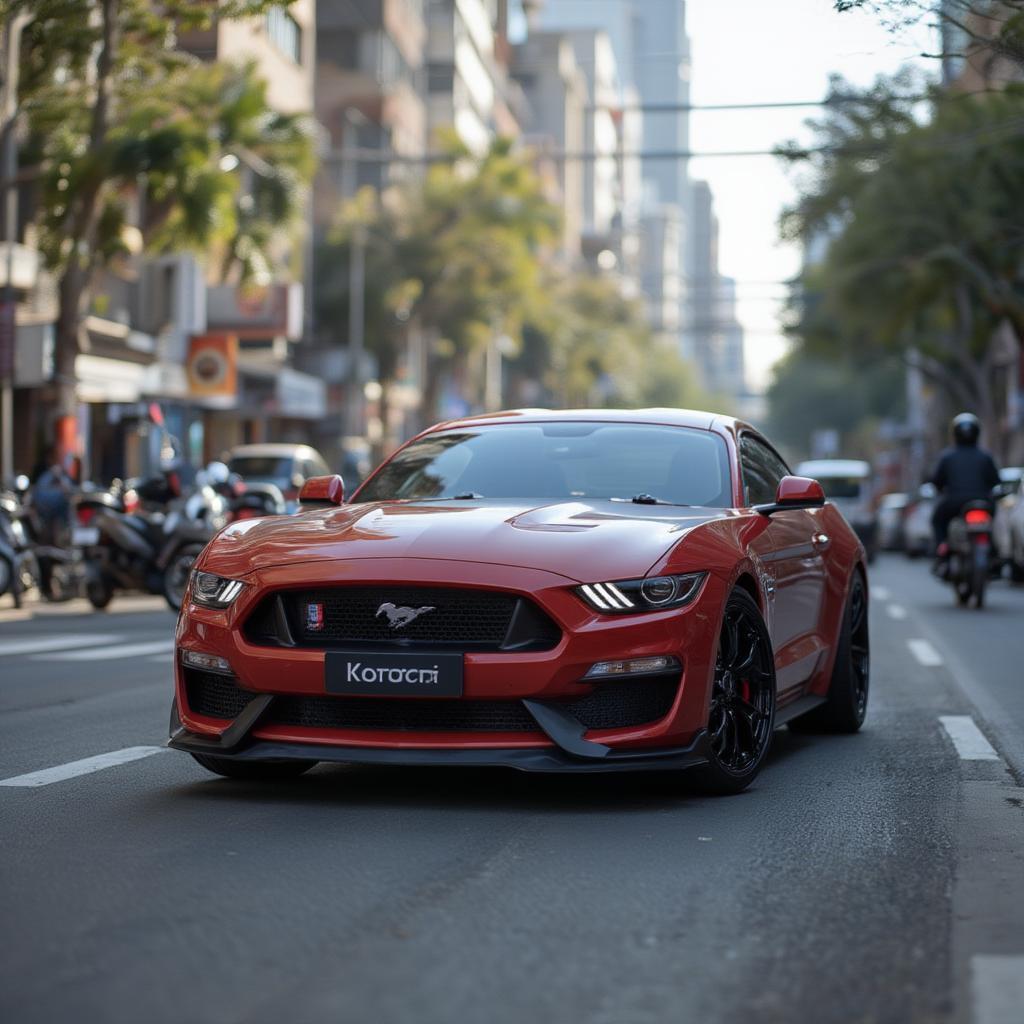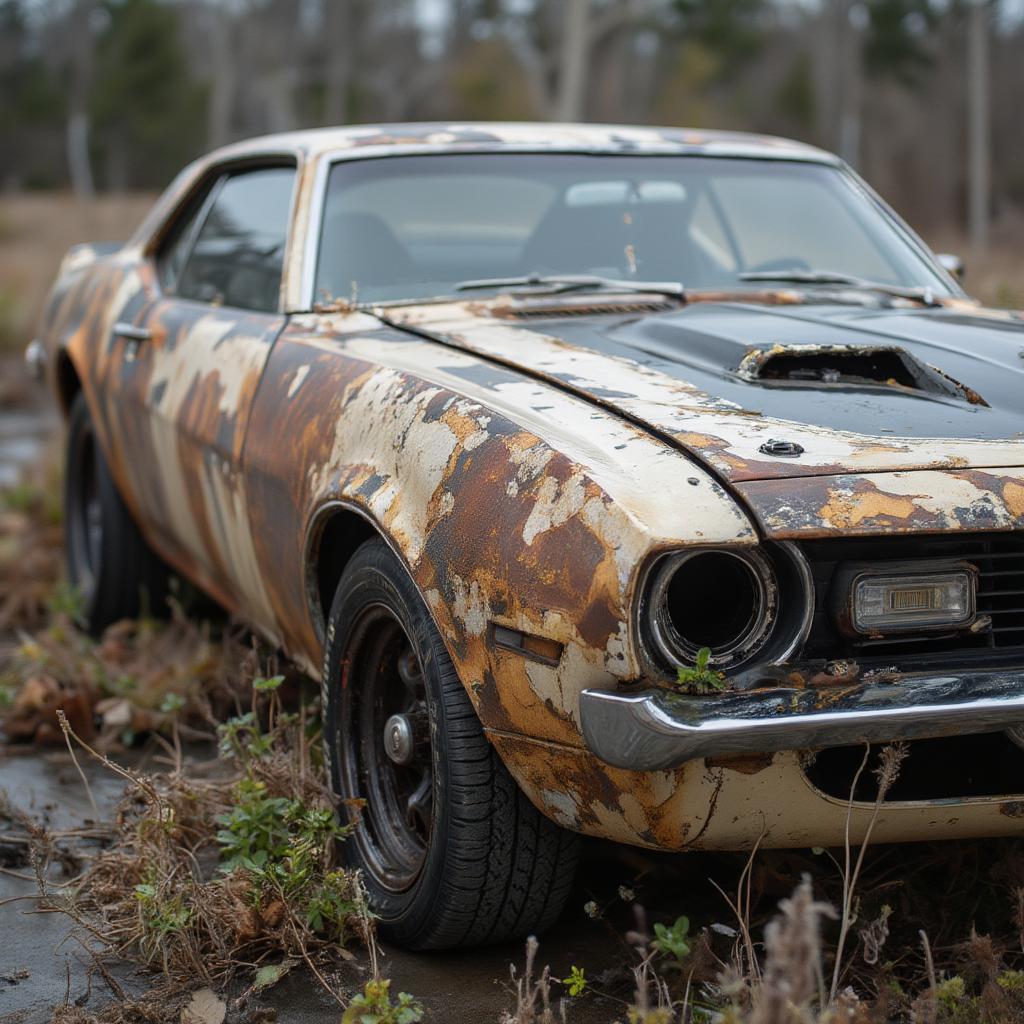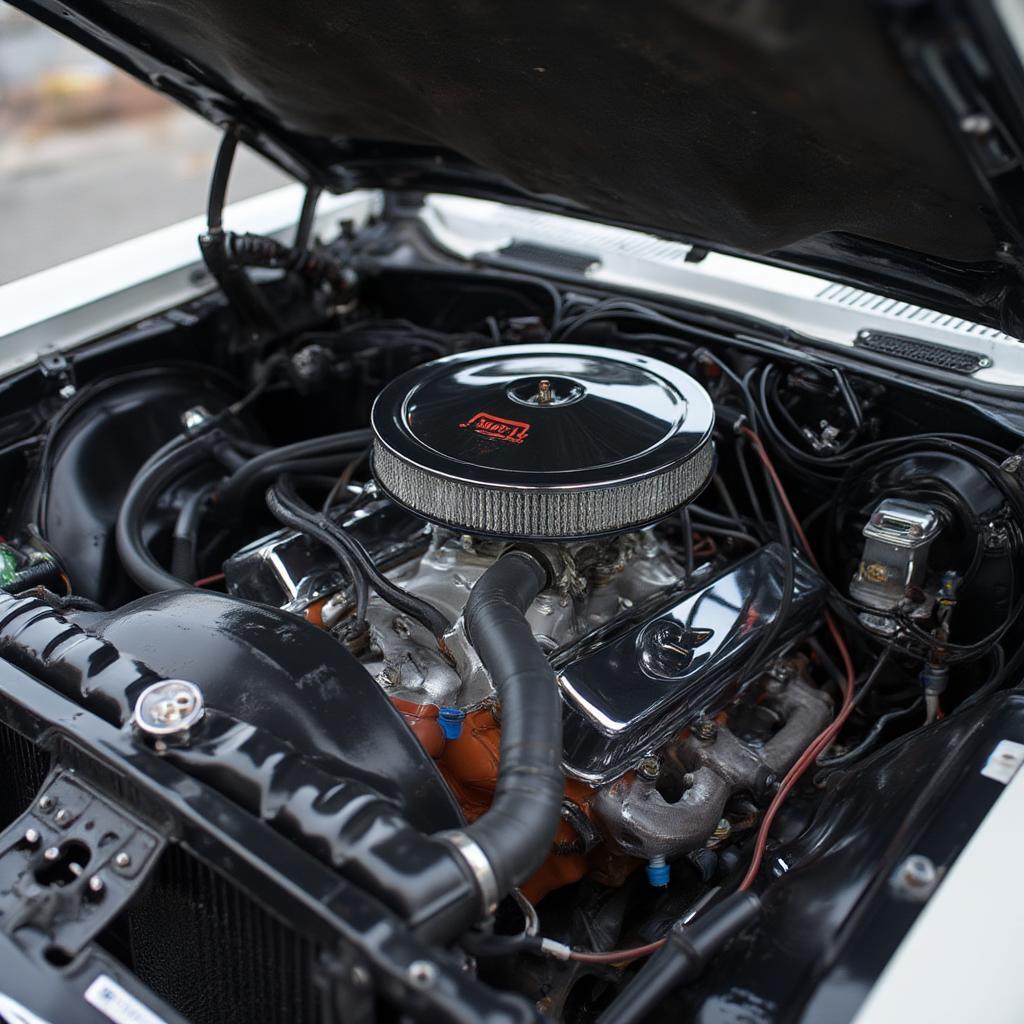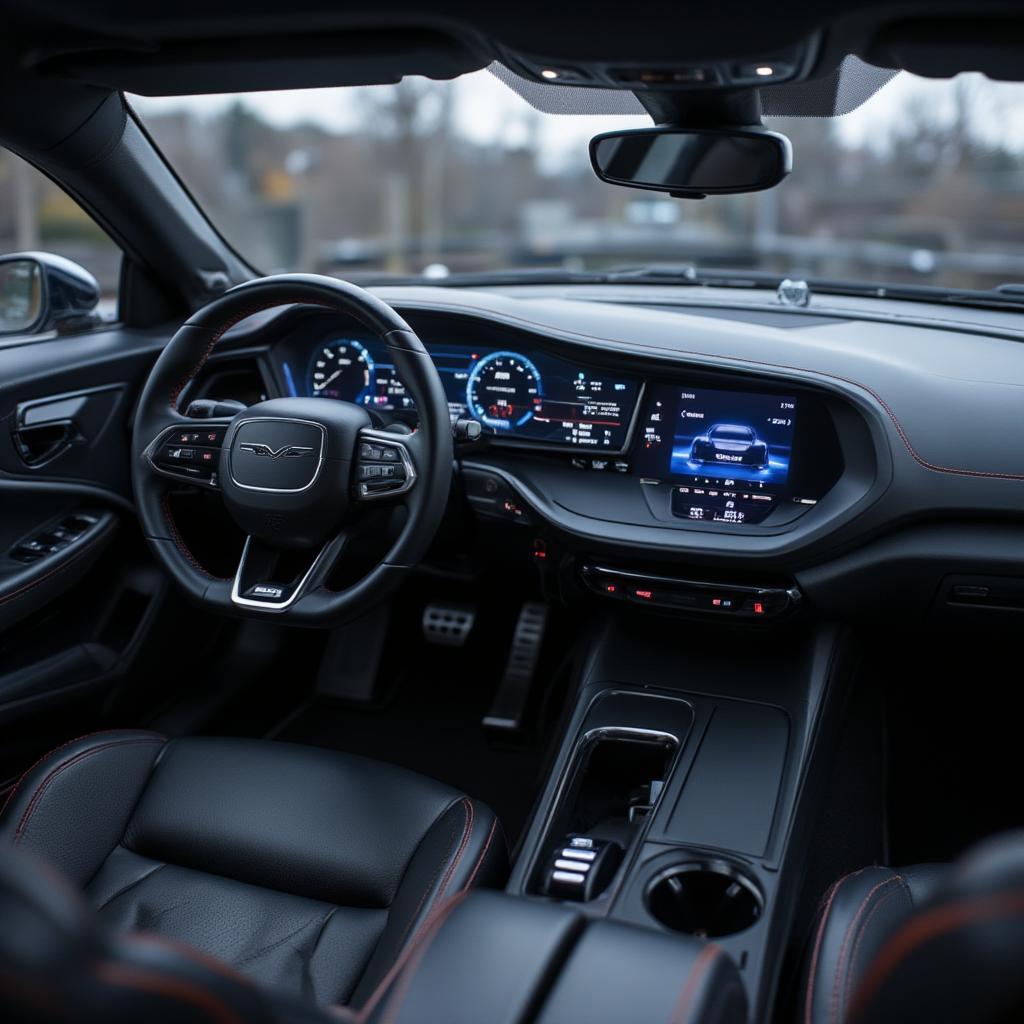The Most Beautiful Muscle Cars: A Celebration of Automotive Art
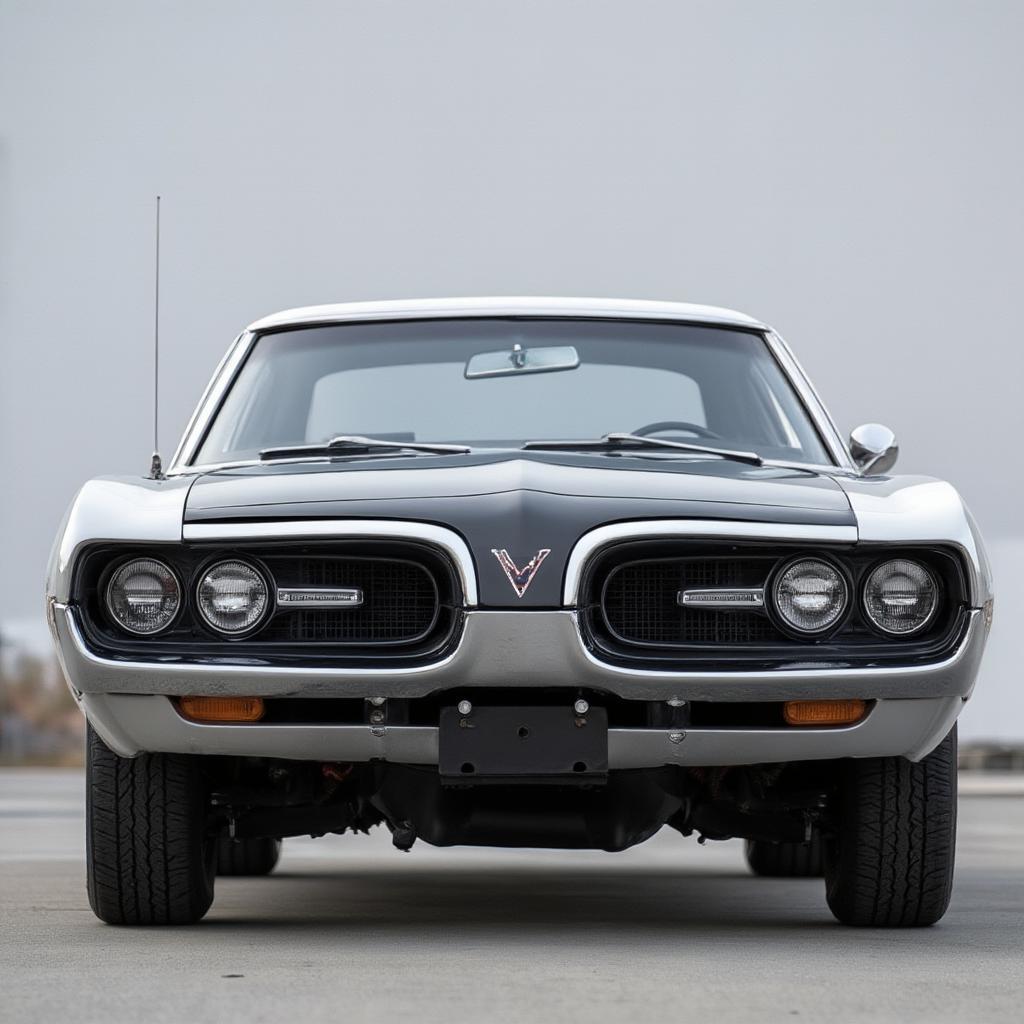
The allure of a muscle car is undeniable. It’s a visceral experience, a blend of raw power, aggressive styling, and a rumbling soundtrack that resonates deep within the soul. But beyond the performance, there’s a certain aesthetic that elevates some muscle cars to the realm of true beauty. This isn’t just about speed; it’s about the lines, the curves, the details that make these machines rolling works of art. We’re not talking about just any car; we are diving into the world of the Most Beautiful Muscle Cars, the ones that turn heads and spark conversations wherever they go.
Defining Muscle Car Beauty: More Than Just Horsepower
What exactly makes a muscle car “beautiful”? It’s subjective, of course, but certain elements consistently appear in the most admired examples. It’s not just about the power under the hood, it’s also about the design language, the overall stance, and the way light plays on the car’s surfaces. We’re looking for vehicles that evoke emotion, that tell a story of a specific era. It’s the kind of beauty that makes you want to stare, to linger, and appreciate the artistry of the design.
- Proportions: The relationship between the length, width, and height of the vehicle is crucial. A long hood, short deck, and wide stance are hallmarks of a classic muscle car, and when executed perfectly, they create a dynamic and powerful silhouette.
- Lines and Curves: The way the lines flow across the body is what really sets a beautiful muscle car apart. From the sharp creases to the smooth, flowing curves, every line is there for a purpose. These details define the car’s character and create visual interest.
- Attention to Detail: It’s the small things that elevate some cars to the level of true beauty. Think about the grille, the headlights, the taillights, the badging. These details can make or break a car’s look. They need to be both functional and visually appealing.
- Originality and Authenticity: A beautiful muscle car should also be a product of its time, authentically reflecting the design trends and cultural context of its era. It’s not about trying to be modern; it’s about being the best version of what it was meant to be.
Iconic Beauties: The Most Stunning Muscle Cars
Now, let’s explore some of the most iconic and undeniably beautiful muscle cars that have graced our roads. These aren’t just fast cars; they’re rolling sculptures.
The 1970 Dodge Challenger: A Masterclass in Aggression
The 1970 Dodge Challenger is a symbol of muscle car excess at its finest. With its long hood, short deck, and wide stance, this car is a rolling monument to American power and style. It’s the embodiment of the “pony car” aesthetic, and its aggressive lines and potent engines made it an instant classic. A car that is as comfortable on the street as it is at the drag strip. The Challenger’s design was both bold and elegant, with just enough subtle curves to make it look fast even when standing still. For many, the Challenger represents the pinnacle of muscle car design, and it’s easy to see why. Its distinctive grille, quad headlights, and full-width taillights are instantly recognizable, making it a true icon of the era. The value and the rarity of some of the higher-powered models is discussed in detail when you consider the [1970 dodge challenger 426 hemi price].
The 1967 Chevrolet Camaro: A Sleek and Sporty Icon
The 1967 Chevrolet Camaro is an exemplar of a perfectly balanced design. Sleek, sporty, and powerful, this car was created to compete with the Ford Mustang and quickly established itself as a legend. The Camaro’s design was a bit more refined than its competition, with smooth curves and an understated elegance. The long hood and short deck gave the Camaro a sense of speed, even when standing still. Its sleek lines, chrome accents, and distinctive grille made it an instant classic. The first-generation Camaro captured the spirit of the era with its sharp lines and sporty aesthetic. The Camaro, particularly in its convertible form, exudes a sophisticated charm that is hard to resist. The Camaro’s enduring popularity is a testament to its design and appeal.
The 1969 Ford Mustang Mach 1: A True Muscle Car Statement
The 1969 Ford Mustang Mach 1 is an aggressive and powerful statement in muscle car form. The fastback roofline, hood scoop, and rear spoiler give it a distinctly sporty look, and the available powerful V8 engines make it a force to be reckoned with. This version of the Mustang was designed to compete in drag racing, and it’s clear from the car’s design that it was built for speed. The Mach 1’s styling was bold and purposeful, featuring a blacked-out hood, distinctive side stripes, and a rear spoiler that added to its aerodynamic look. The long lines and aggressive stance of the Mach 1 make it a timeless classic and one of the most beautiful muscle cars ever made.
“The beauty of a muscle car is more than just its looks; it’s a reflection of a specific time and place. The 1969 Mustang Mach 1, for example, captures the spirit of the late 60s perfectly, with its aggressive styling and powerful presence,” says automotive historian, Dr. Evelyn Reed.
The 1970 Plymouth Hemi Cuda: Raw Power and Bold Design
The 1970 Plymouth Hemi Cuda is an example of raw, unrestrained power combined with a truly memorable design. The Cuda’s aggressive front end, bold body lines, and shaker hood give it an undeniably intimidating presence. Its clean lines and minimalist approach make it a real standout. The Hemi Cuda, especially in its bright colors and with the iconic shaker hood, is considered by many to be the ultimate muscle car. The Hemi Cuda’s design was both aggressive and sophisticated. It’s truly a car that commands attention. For those looking for top of the line power the [hemi cuda] is at the top of the list.
The Timeless Appeal of Muscle Car Beauty
What makes these cars so beautiful, even decades later? It’s a combination of factors. Muscle car beauty is about more than just aesthetics; it’s about emotion and nostalgia. These cars represent a simpler time, a time when power and style were valued above all else. They represent freedom, adventure, and a unique American spirit. Their appeal is timeless because they tap into something primal and visceral within us. They are more than just cars; they are cultural icons. These vehicles are not just beautiful to look at; they are exciting to experience. The rumble of the engine, the sheer power under the hood, the feel of the road beneath the tires – these are all integral parts of their appeal.
Preserving the Legacy: The Importance of Restoration and Appreciation
Preserving these beautiful muscle cars is vital to the car world and to those who appreciate automotive history. The restoration process is often a labor of love, and it helps keep these automotive works of art alive for future generations. It’s not just about having a nice car; it’s about carrying on a legacy. Restoration often requires an understanding of the original design and manufacturing processes, which is a fascinating study in itself. Restoring and preserving the car will ensure that they continue to inspire car enthusiasts for many years to come. When looking for parts or service, many people look for [classic cars wichita falls tx] to help restore their cars to their original glory.
“Owning and restoring a classic muscle car is about more than just having a cool car. It’s about preserving a piece of automotive history and the stories they tell,” notes classic car restorer, Mark Johnson.
Factors Influencing a Muscle Car’s Beauty
While individual preferences may vary, certain factors consistently influence how a muscle car is perceived aesthetically. The following aspects often play a significant role:
- The Era: Muscle cars from the late 1960s and early 1970s are often considered the most beautiful, due to their bold designs and powerful presence. Each era has its own design characteristics that resonate with people differently.
- Rarity and Originality: Rare models or those that have been restored to their original specifications often hold a greater sense of value. These cars are more appealing to enthusiasts and collectors.
- Paint and Chrome: The colors and use of chrome can dramatically impact the beauty of a muscle car. A well-chosen paint color and expertly applied chrome can make a car truly stand out.
- Condition and Care: A well-maintained muscle car will always be more beautiful than one that has been neglected. The condition of the paint, chrome, and interior all contribute to the car’s overall appearance.
Beyond the Big Names: Other Beautiful Muscle Car Contenders
While the cars mentioned above are often hailed as the most beautiful, other models deserve recognition for their aesthetic contributions to the muscle car world. Vehicles such as the 1970 Dodge Coronet Super Bee with its angular design or the 1971 Oldsmobile 442 with it smooth lines are examples of the broad and diverse aesthetic landscape of the muscle car era. Each of these models offered something unique and special. Their beauty lies not only in their design but also in their embodiment of the era’s culture. These cars, although not as mainstream as the big names, showcase the artistry of the muscle car design. In fact, you can find information about the [1970 dodge coronet super bee] and the [1971 oldsmobile 442] on our website, should you want to explore these beauties further.

Conclusion: A Lasting Legacy
The quest to define the most beautiful muscle cars is a journey through automotive history, exploring designs, power, and the culture that birthed these iconic vehicles. While beauty remains subjective, certain cars consistently captivate with their proportions, lines, and attention to detail. From the aggressive stance of the 1970 Dodge Challenger to the refined curves of the 1967 Chevrolet Camaro, these cars are more than just machines; they are works of art that embody the spirit of the muscle car era. Their legacy continues to inspire and captivate enthusiasts and collectors alike. They remind us of a time when cars were not just about transportation but also about passion, freedom, and the thrill of driving.
Frequently Asked Questions (FAQ)
1. What makes a muscle car beautiful?
The beauty of a muscle car comes from a combination of factors, including its proportions, the lines and curves of its body, the attention to detail in its design, and how authentically it represents its era. It’s a combination of power and aesthetics that makes these cars so appealing.
2. Which muscle car is generally considered the most beautiful?
While beauty is subjective, the 1970 Dodge Challenger and the 1967 Chevrolet Camaro are frequently cited as among the most beautiful muscle cars, due to their iconic designs and powerful presence.
3. What are some key elements of muscle car design?
Key elements include a long hood, short deck, wide stance, aggressive lines, and attention to specific details like the grille, headlights, taillights, and badging. These elements combine to create the characteristic look of a muscle car.
4. Are there any muscle cars that are beautiful despite not being as well-known?
Yes, models like the 1970 Dodge Coronet Super Bee and the 1971 Oldsmobile 442 are less commonly recognized but possess distinctive features and aesthetic appeal that make them stand out from the crowd. They showcase the broad range of design aesthetics within the muscle car era.
5. How can I preserve the beauty of a classic muscle car?
To preserve the beauty of a classic muscle car, proper maintenance and care are essential. This includes regular cleaning, waxing, and careful storage, as well as ensuring all mechanical components are in good working order. Restoration may be necessary, but if done well, it can help preserve the beauty and the car’s history.
6. Why are muscle cars from the late 1960s and early 1970s often regarded as the most beautiful?
The cars from this period are seen as particularly beautiful because they were produced during a time when automotive design was bold, aggressive, and focused on power. It was a unique era, characterized by a combination of aesthetic and mechanical engineering, that produced many iconic cars.
7. Does the color of a muscle car affect its beauty?
Yes, the color of a muscle car can greatly affect its overall appearance. Certain colors and color combinations can enhance the car’s curves and lines, making it more visually appealing. The use of chrome and other trim elements will also play a role in the overall aesthetic.

